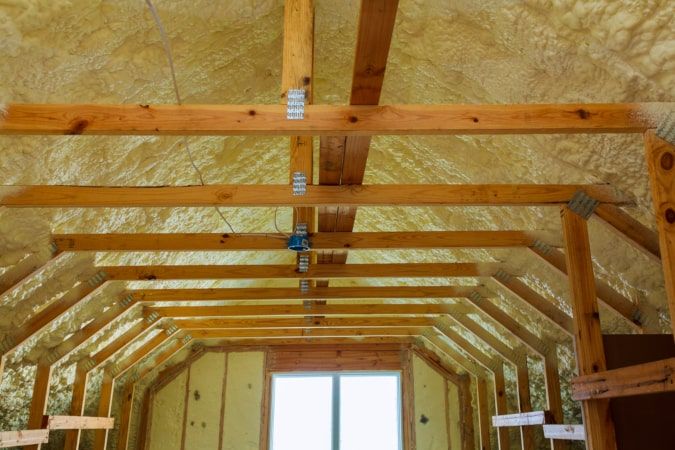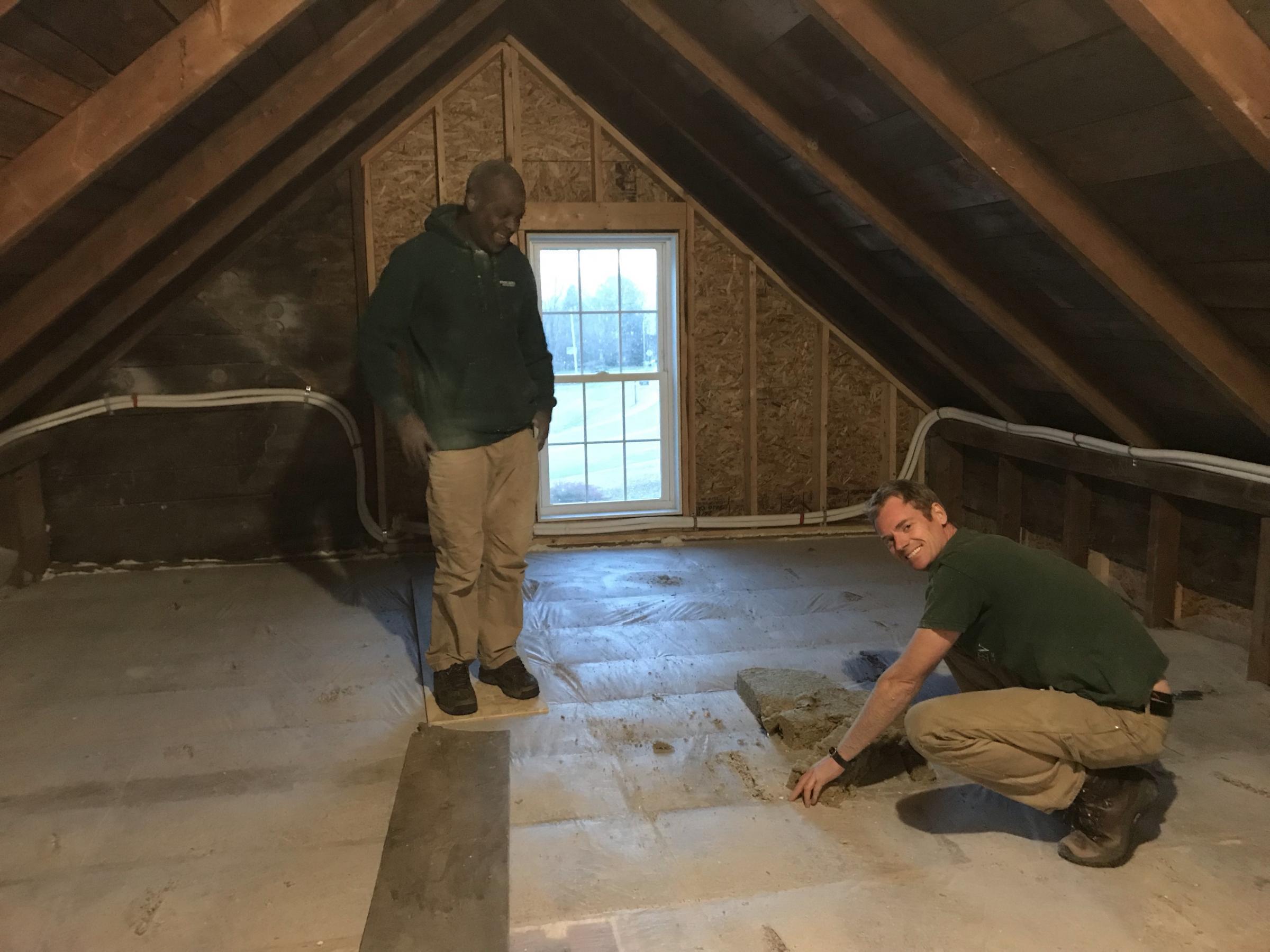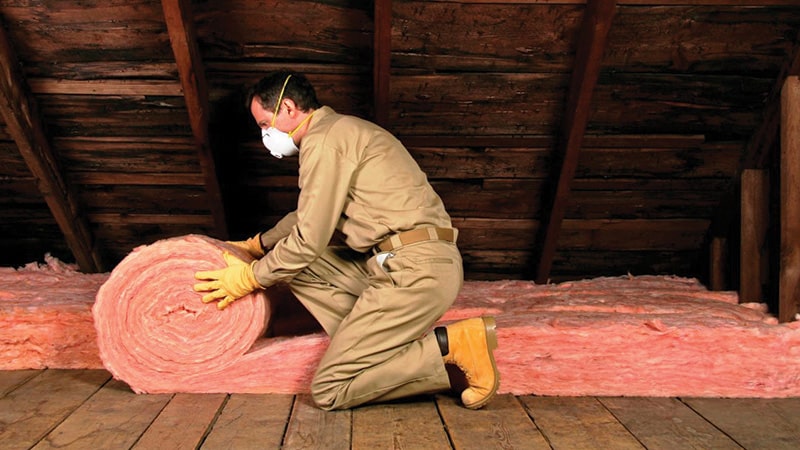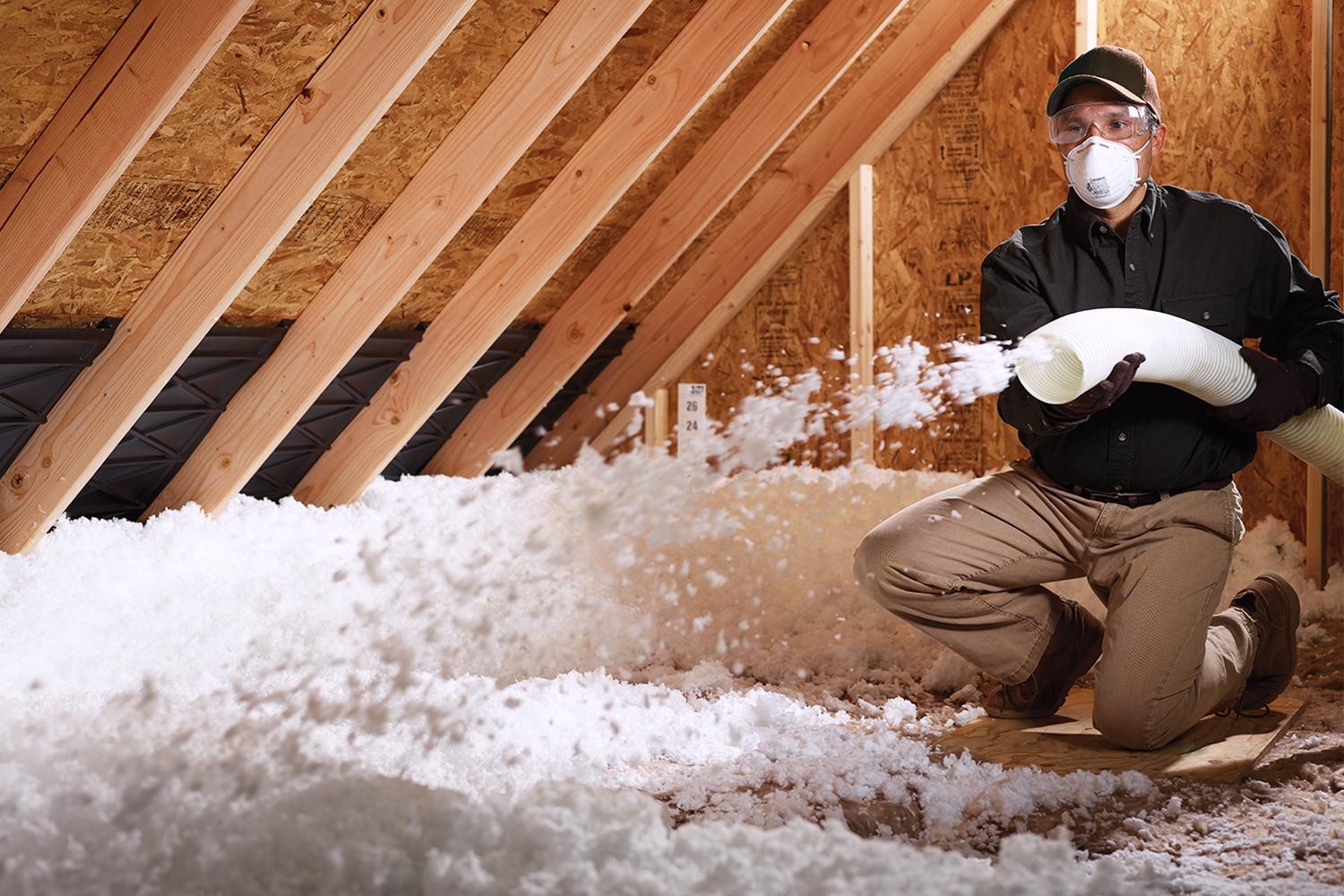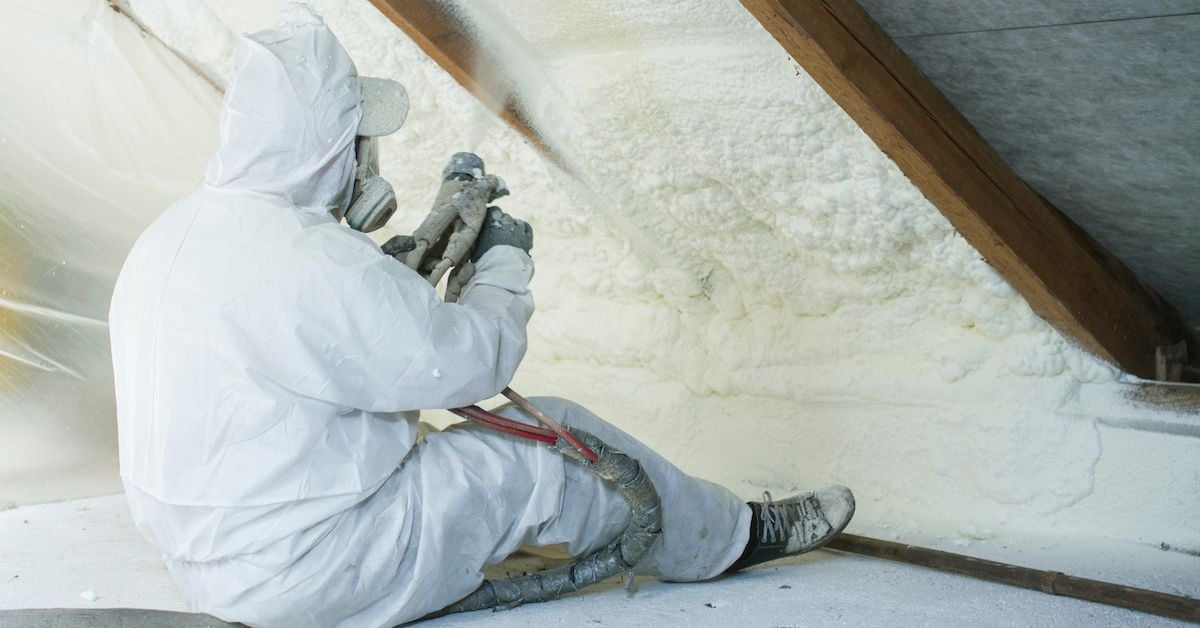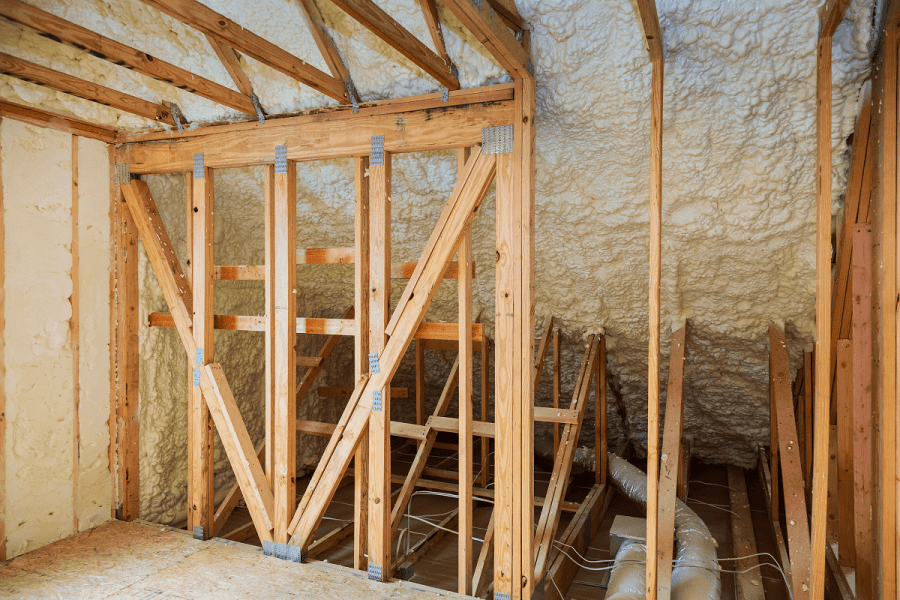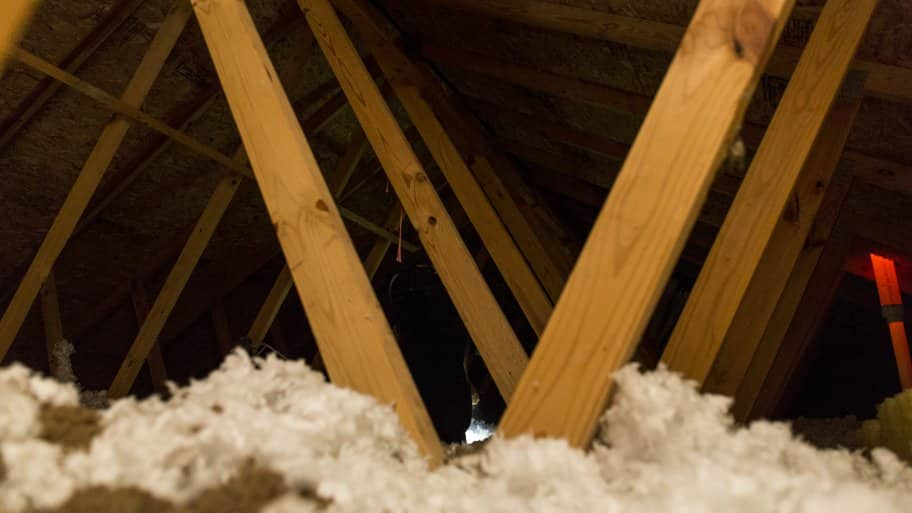Pump Insulation Into Attic

One for attic prep and the second to actually blow the insulation.
Pump insulation into attic. If you need to add insulation in your attic save big by blowing in cellulose insulation yourself. A large machine outside churns the chunks and uses air to blow them up through the hose. For instance a clog in your drain line can cause condensation from your heat pump unit to back up and spill out over the drain pan leading to mold in your insulation and drywall rotting attic floor joists and ceiling leaks in the rooms below your attic all things you don t want for your home trust us. With a hole saw cut a small hole between 2 and 3 inches wide between two studs and near the top of the wall and place the cut portion aside you will reattach this later.
To make insulating an attic easier grab a helper and set aside two days. Attic turbines can help ventilate an attic in the summer and possibly cool your attic and prevent ice dams in the winter which can prolong the life of your attic. Connect the hose to the blown in insulation machine. But the age of the home isn t the only.
A better choice is insulation that comes in smaller chunks. Some other attic options may provide better cooling results but overall attic ventilation turbines are a great option for attic energy efficiency. Drafts and increased dust issues. You can do it yourself for about 500.
There it radiates down into the attic heating up the insulation the framing the ductwork and the boxes of christmas tree ornaments. The pros charge 1 500 to 2 000 to do a 1 200 sq ft. The installer taking his best firefighter pose holds a large hose and blows the chunks into the attic. Blowing attic insulation isn t hard but it s dusty sweaty work.
You d need a thickness of. Proper attic insulation is the best way to prevent heat loss in the winter and retain cool air in the summer. Repeat this step between each pair of studs. Once the solar radiation is absorbed some of the heat still gets ejected to the outside but much of it conducts downward through the roofing materials and roof deck.
Then feed 1 2 a bag of fill into the machine and turn on the hose to start blowing the insulation. Connect the hose to the insulation machine. When blown into attics and wall spaces loose fill fiberglass offers an average r 2 5 thermal value per inch the higher the number the greater the insulating effect. So it s time to pay close attention to what s happening up there.

